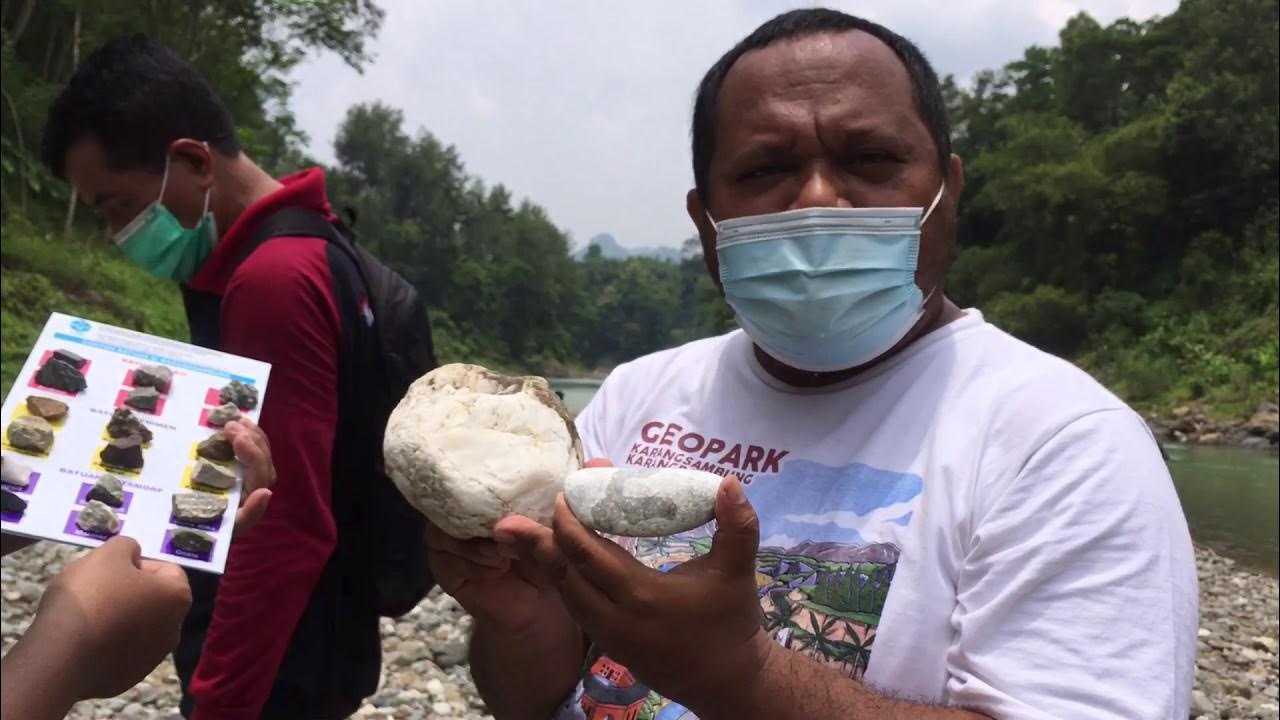Rock Cycle - Formation of Igneous, Metamorphic, Sedimentary Rocks | Geology
Summary
TLDRThis video explores the rock cycle, detailing how igneous rocks form from magma and lava, then weather into sediments to create sedimentary rocks. It explains metamorphosis in rocks due to heat and pressure, leading to the formation of metamorphic rocks. The cycle continues as these rocks are broken down and returned to the mantle through subduction, where they may eventually melt into magma, restarting the cycle.
Takeaways
- 🌋 The rock cycle is a continuous process involving the transformation of rocks over time due to natural forces.
- 🔥 Igneous rocks are primary rocks formed directly from magma and lava cooling and solidifying.
- ⛰️ Weathering and erosion break down igneous rocks into smaller fragments known as sediments.
- 🏞️ Sedimentary rocks are formed from the accumulation and compaction of sediments over time.
- 🔥 Sedimentary rocks can be broken down again into sediments, continuing the cycle.
- 🔥 Heat and pressure deep within the Earth can cause rocks to change form without melting, a process known as metamorphism.
- 🌏 Metamorphic rocks are found mostly in mountainous regions due to the high heat and pressure there.
- 🌌 Exogenous forces like wind and water can break down metamorphic rocks into sediments.
- 🌐 The process of subduction allows metamorphic and igneous rocks to be recycled back into the mantle.
- 🌋 Magma, which is recycled rock material, can rise to the surface through volcanic activity, restarting the rock cycle.
Q & A
What is the rock cycle?
-The rock cycle is a process by which rocks are formed, changed, and reformed over time through various geological processes.
What are primary rocks?
-Primary rocks, also known as igneous rocks, are formed directly from the cooling and solidification of magma or lava.
Why are igneous rocks called primary rocks?
-Igneous rocks are called primary rocks because they are formed directly from the Earth's mantle without undergoing any other geological processes.
How are sedimentary rocks formed?
-Sedimentary rocks are formed from the accumulation and compaction of sediments, which are small fragments or debris from weathered igneous rocks.
What is the process called where sediments turn into sedimentary rocks?
-The process where sediments turn into sedimentary rocks is called lithification.
What are secondary rocks?
-Secondary rocks include sedimentary and metamorphic rocks, which are formed from the transformation of primary rocks.
How does the process of metamorphosis relate to rocks?
-In rocks, metamorphosis refers to the transformation of existing rock types, like sedimentary rocks, into metamorphic rocks due to heat and pressure.
Where does the heat that forms metamorphic rocks come from?
-The heat that forms metamorphic rocks comes from within the Earth, such as from tectonic plate movements and the pressure generated by these movements.
Why are metamorphic rocks commonly found in mountain areas?
-Metamorphic rocks are commonly found in mountain areas because these regions often experience high pressures and temperatures due to tectonic activities.
How can metamorphic rocks become sedimentary rocks again?
-Metamorphic rocks can be broken down by exogenous forces like wind and water, turning them into sediments that can eventually form sedimentary rocks.
What is subduction and how does it relate to the rock cycle?
-Subduction is the process where one tectonic plate moves under another, causing metamorphic and igneous rocks to be pushed back into the mantle. This is part of the rock cycle as it returns rocks to the Earth's interior.
How does the rock cycle continue with magma?
-The rock cycle continues with magma as it rises to the surface through volcanic activity, eventually cooling and solidifying to form new igneous rocks.
Outlines

Cette section est réservée aux utilisateurs payants. Améliorez votre compte pour accéder à cette section.
Améliorer maintenantMindmap

Cette section est réservée aux utilisateurs payants. Améliorez votre compte pour accéder à cette section.
Améliorer maintenantKeywords

Cette section est réservée aux utilisateurs payants. Améliorez votre compte pour accéder à cette section.
Améliorer maintenantHighlights

Cette section est réservée aux utilisateurs payants. Améliorez votre compte pour accéder à cette section.
Améliorer maintenantTranscripts

Cette section est réservée aux utilisateurs payants. Améliorez votre compte pour accéder à cette section.
Améliorer maintenant5.0 / 5 (0 votes)






